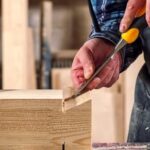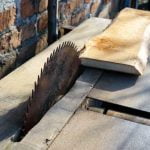What work clothes do Japanese woodworkers wear is a question that sheds light on the significance of attire in the woodworking industry. In Japan, traditional work clothes have deep cultural roots and practical functionality. The art of woodworking in Japan has a rich history and is known for its precision and attention to detail. As such, the attire worn by Japanese woodworkers has evolved to accommodate the specific needs of this craft.
In traditional Japanese woodworking, the garments worn by woodworkers are not just a matter of practicality but also hold cultural significance. These traditional work clothes reflect the values and traditions of Japanese woodworking culture, emphasizing the importance of heritage and craftsmanship. However, with the modernization of industries, there has been an evolution in workwear options for Japanese woodworkers, incorporating functional features while maintaining ties to tradition.
Furthermore, the balance between tradition and modernity in the Japanese woodworking industry is evident in both the attire worn by woodworkers as well as their approach to woodworking techniques. This article will delve into the traditional garments worn by Japanese woodworkers, explore modern adaptations of workwear in this industry, analyze the functional aspects of these garments, discuss protective gear commonly used, examine cultural significance, and compare influences from Western workwear.
Traditional Garments
Japanese woodworking is steeped in tradition and cultural significance, and this extends to the work clothes worn by woodworkers. Traditional garments play a crucial role in not only distinguishing the woodworking profession in Japan but also in reflecting the values and heritage of this industry. The attire worn by Japanese woodworkers is a blend of functionality, practicality, and a deep-rooted connection to tradition.
One of the most iconic traditional work clothes worn by Japanese woodworkers is the “monpe,” which are loose-fitting trousers that allow for flexibility and ease of movement during woodworking tasks. The “samue” is another traditional garment often worn by woodworkers, consisting of a jacket and trousers made from durable cotton or linen fabric.
These traditional work clothes are designed to provide both comfort and protection while working with wood, showcasing the craftsmanship and attention to detail that are central to Japanese woodworking practices.
Maintaining tradition in woodworking attire is highly valued among Japanese woodworkers, as it serves as a way to honor their heritage and preserve their cultural identity. The traditional garments not only reflect the rich history of Japanese woodworking but also embody the spirit of discipline, respect for materials, and dedication to craftsmanship that are essential in this industry.
Despite modern advancements in workwear, many Japanese woodworkers continue to embrace these traditional garments as they represent a deep reverence for their craft.
| Traditional Work Clothes Worn by Japanese Woodworkers | Specific Features |
|---|---|
| Monpe | Loose-fitting trousers for flexibility and ease of movement |
| Samue | Durable cotton or linen fabric for comfort and protection |
Modern Adaptations
The traditional Japanese woodworking industry has a rich history and cultural significance, with work clothes playing an integral role in this heritage. However, as the industry has evolved, so too have the work clothes worn by Japanese woodworkers. Modern adaptations of traditional attire have emerged to meet the changing needs of the industry and accommodate technological advancements.
Evolution of Work Clothes
As the tools and techniques used in woodworking have advanced, so have the work clothes worn by Japanese woodworkers. Traditional garments such as samue and monpe have been adapted to incorporate modern materials and construction methods, offering increased durability and comfort. The evolution of these work clothes reflects the ongoing innovation within the Japanese woodworking industry while still paying homage to its cultural roots.
Exploration of Modern Workwear Options
In addition to adapted traditional garments, modern workwear options tailored specifically for Japanese woodworkers have also gained popularity. These contemporary designs often feature practical elements such as reinforced knees for kneeling during intricate woodworking tasks, extra pockets for convenient tool storage, and adjustable fits for freedom of movement. The incorporation of these modern features addresses the practical needs of woodworkers in today’s industry while honoring the legacy of their traditional attire.
Balance Between Tradition and Modernity
While modern adaptations have brought about significant changes in work clothes for Japanese woodworkers, there remains a delicate balance between tradition and modernity in the industry. It is essential to preserve the cultural significance and craftsmanship associated with traditional attire while embracing innovations that improve functionality and safety. As such, many woodworkers continue to choose garments that honor their heritage while integrating modern elements to enhance their performance in the workshop.
Functional Features
When it comes to the work clothes worn by Japanese woodworkers, functionality is a key consideration. These traditional garments are designed to provide comfort, mobility, and protection while working with wood.
One of the most iconic pieces of clothing in Japanese woodworking is the “monpe,” which are loose-fitting pants that offer ease of movement and allow for ventilation in the heat of summer. Additionally, Japanese woodworkers often wear a “samue” jacket, which provides both warmth and flexibility during colder months.
Specific Design Elements
The functional features of Japanese woodworking attire are evident in their specific design elements. For example, the loose fit of the monpe allows for unrestricted movement when squatting or bending, essential movements in woodworking tasks. Additionally, many traditional garments are made from durable and breathable fabrics such as cotton or hemp to ensure comfort and practicality in varied working conditions.
Durability and Longevity
Japanese work clothes for woodworkers are known for their durability and longevity. The materials used to construct these garments are carefully chosen to withstand the rigors of woodworking tasks. From reinforced knee areas on the monpe to sturdy stitching on jackets, every aspect of traditional Japanese workwear is designed with longevity in mind.
Protective Gear
Japanese woodworkers prioritize safety while working with their craft, and as such, they utilize a variety of protective gear to ensure their well-being. One key element of their work clothes is the use of protective gloves, often made from durable materials such as leather or heavy-duty fabric. These gloves serve to provide grip and protection against splinters, cuts, and other hazards that may arise during woodworking tasks.
In addition to gloves, Japanese woodworkers also make use of aprons or smocks to shield their clothing from sawdust, wood chips, and other debris that are common in woodworking environments. These protective garments help maintain the longevity of their work clothes while also preventing particles from getting into pockets or sleeves, which can be both inconvenient and potentially hazardous.
Furthermore, eye protection is an essential component of the work attire for Japanese woodworkers. Safety glasses or goggles are worn to safeguard the eyes from flying debris and wood shavings generated by cutting, planing, and shaping wood. This protective gear plays a crucial role in preventing eye injuries and ensuring the overall well-being of the woodworker.
| Protective Gear | Usage |
|---|---|
| Protective Gloves | Provide grip and protection against splinters and cuts |
| Aprons/Smocks | Shield clothing from sawdust and wood chips |
| Eye Protection | Safeguard eyes from flying debris and wood shavings |
Cultural Significance
The work clothes worn by Japanese woodworkers hold a significant cultural and traditional value within the woodworking industry. These garments not only serve practical functions but also reflect the deep-rooted values and traditions of Japanese woodworking culture. Traditional attire in Japan is an integral part of the country’s heritage, and this is evident in the specific work clothes worn by woodworkers.
In traditional Japanese woodworking, craftsmen typically wear a distinct set of work clothes that have been passed down through generations. These garments often include a combination of loose-fitting trousers, jackets, and aprons made from durable and breathable fabrics such as cotton or linen. The use of natural materials not only aligns with the cultural emphasis on sustainability and natural resources but also provides comfort and flexibility for woodworkers during their tasks.
The significance of these traditional work clothes extends beyond their physical appearance and usage. They are symbolic of the craftsmanship, attention to detail, and respect for tradition that are deeply ingrained in Japanese woodworking culture.
The attire serves as a representation of the values held by woodworkers, emphasizing humility, precision, and appreciation for nature’s beauty. Moreover, these garments also contribute to creating a sense of community and identity among Japanese woodworkers, as they collectively honor their craft through the shared tradition of wearing specific work clothes.
Influences From Western Workwear
The traditional work clothes worn by Japanese woodworkers have been influenced by the rich cultural heritage of Japan. However, in recent years, there has been a noticeable impact of Western workwear on the attire choices of Japanese woodworkers. This shift can be attributed to globalization and the exchange of ideas and practices between different cultures.
Some influences from Western workwear on Japanese woodworking attire include:
- Denim: Traditional Japanese work clothes were often made from cotton or hemp fabrics, but modern woodworkers have started incorporating denim jeans into their work attire for its durability and versatility.
- Work boots: While traditional Japanese footwear like geta or jika-tabi were commonly worn by woodworkers, many have now switched to sturdy leather work boots with safety features for added protection.
- Utility vests: Western-style utility vests with multiple pockets and loops for tools and accessories have become popular among Japanese woodworkers due to their practical design.
This integration of Western workwear elements into traditional Japanese woodworking attire reflects the industry’s adaptability and openness to embracing new trends while maintaining its core values. As the woodworking industry continues to evolve, it will be interesting to see how these influences shape the future of work clothes for Japanese woodworkers.
Conclusion
In conclusion, the work clothes worn by Japanese woodworkers are deeply rooted in tradition and culture, reflecting the values and heritage of the woodworking industry in Japan. The traditional garments, such as the samue and monpe, have been an integral part of woodworking attire for generations, emphasizing the significance of maintaining cultural authenticity in work clothing.
However, as the industry has evolved, there has been a shift towards modern adaptations and influences from Western workwear, allowing Japanese woodworkers to embrace functionality and safety without completely abandoning their traditional roots.
It is evident that the functional features and protective gear incorporated into Japanese work clothes prioritize the safety and efficiency of woodworkers. From reinforced knees to durable fabrics, these garments are specifically designed to withstand the demands of woodworking tasks while ensuring the well-being of craftsmen. The cultural significance of these work clothes goes beyond mere attire; it embodies a sense of pride, craftsmanship, and respect for tradition within the woodworking community in Japan.
Ultimately, finding a balance between tradition and modernity is crucial in preserving the essence of Japanese woodworking culture while embracing advancements in workwear technology. As Japanese woodworkers continue to honor their heritage while adapting to contemporary needs, it is essential to recognize how their choice of work clothes reflects not only practical considerations but also a profound connection to their craft and cultural identity.
Frequently Asked Questions
What Do Japanese Workers Wear?
Japanese workers often wear business casual attire, including dress pants, collared shirts, and sometimes a suit or blazer for more formal occasions. In more informal work environments, such as creative industries or technology companies, employees may have the option to dress more casually, with jeans and a collared shirt being common.
Why Do Japanese Construction Workers Wear Baggy Pants?
Japanese construction workers wear baggy pants for practical reasons. The loose fit allows for greater ease of movement and flexibility while on the job. Additionally, the extra fabric provides protection against scrapes and cuts that can occur in a physically demanding occupation like construction work.
What Are Japanese Work Pants Called?
Japanese work pants are commonly referred to as “zubon.” These pants are designed for comfort, durability, and functionality in various work settings. They come in different styles and materials to suit the specific needs of different professions. In addition to zubon, workers may also wear specialized clothing depending on their field of work.

Hi everyone! I’m a woodworker and blogger, and this is my woodworking blog. In my blog, I share tips and tricks for woodworkers of all skill levels, as well as project ideas that you can try yourself.





